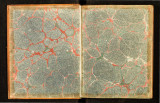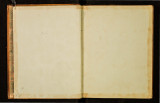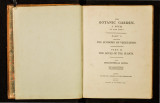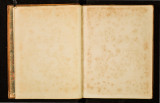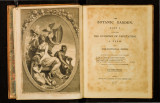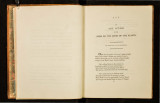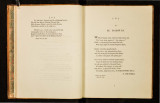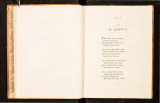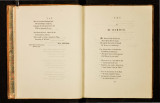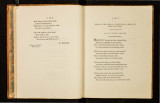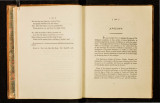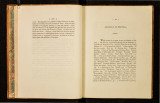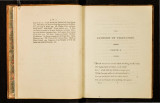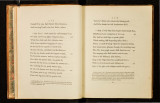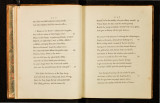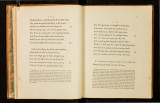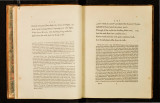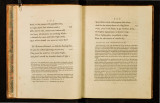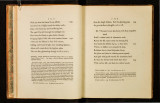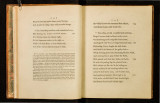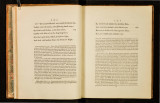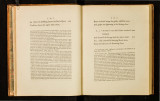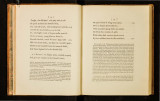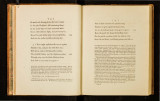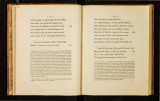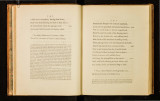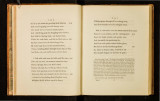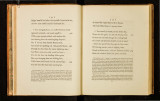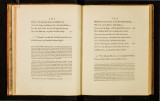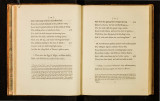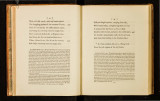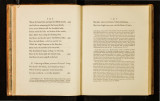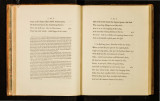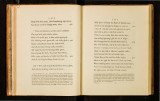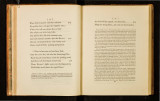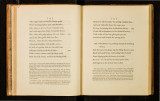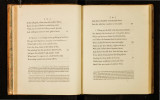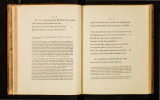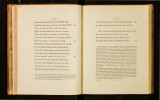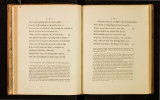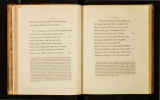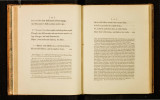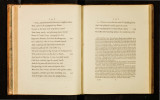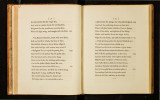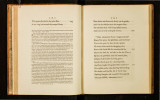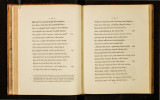| OCR Text |
Show METE 0 R S. NoTE I. the greater reG/lance of the denfer medium through which they pafs, than that in which the fire-balls exifl:. Mr. Brydone obferved that the 010oting ftars appeared to him to be as high in the atmofphere, when he was near the fummit of mount Etna,. as they do when obferved from the plain. Phil. Tran. Vol. LXIII. As the ftratum of air, in which {hooting fl:ars are fuppofed to exifl: is much rarer than that in which lightning refldes, and yet much denfer than that in which fireballs are produced, they will be attratled at a greater dillance than the former, and at a lefs than the latter. From this rarity of the air fo fmall a found will be produced by their explofion, as not to reach the lower parts of the atmofphere ; their quantity of light from their greater diftance being fmall, is never feen through denfe air at all, and thence does not appear red, like lightning or fire-balls. There are no apparent clouds to emit or to attraCl: them, becaufe the con!l:ituent parts of thefe aero-aqueous regions may poffefs an abundance or deficiency of cleCl:ric matter and yet be in perfea reciprocal folution. And lafl:ly their apparent train of light is probably owing only to a continuance of their impreffion on the eye ; as when a fire-fl:ick is whirled in the dark it gives the appearance of a compleat circle of fire: for thefe white trains of ihooting ftars quickly vanifh, and do not feem to fet any thing on fire in their paffage, as feems to happen in the tranfit of fire-balls. " 3· The fecond region or ftratum of air terminates I fuppofe where the twilight ceafes to be refratled, that is, where the air is 3000 times rarer than at the furface of the earth; and where it feems probable that the common air ends, and is furrounded by an atmofphere of inflammable gas tenfold rarer than itfelf. In this region I believe fire-balls fometimes to pafs, and at other times the northern lights to exifl:. One of thefe fire-balls or draco volans, was obferved by Dr. Pringle and many others on Nov. 26, 17 58, which was afterwards efl:imated to have been a mile and a half in circumference, to have been about one hundred miles high, and to have moved towards the north with a velocity of near thirty miles in a fecond of time. This meteor had a real tail many miles long, which threw off fp arks in its courfe, and the whole exploded with a found like dillant thunder. Philof. Trani. Vol. LI. Dr. Blagden has related the hiftory of another large meteor, or fire-ball, which was feen the 18th of Augufl:, 1783, ·with many ingenious obfervations and conjc&mes. This was eftimated to be between 6o and 70 miles high, and to travel Iooo miles at the rate of about twenty miles in a fecond. This fire-blll had likewife a real train of light left behind it in its paffage, which varied in colour; and in fome part of its courfe gave off fparks or explofwns where it had been brightefl:; and a du!ky red fl:reak remained viflble perhaps a minute. Philo[. Tranf. Vol. LXXIV. Thrfe fire-balls differ from lightning, and from·1hooting fl:ars in many remarkable ~ircumfl:ances ; as their very great bulk, being a mile and a half in diameter ; their travelling 1000 miles nearly horizontally; their throwing off fparks in their paffage; and changing colours from bright blue to du!ky red ; and leaving a train of fire behind them, continuing about a minute. They differ from the northern lights in not being diffufed,. but palling from one point of the heavens to another in a defined line ; and this in a region above the crepufcular atmofphere, where the air is 3000 times rarer than at the NoTE I. METE 0 R s. furface of the earth. There has not yet been eve . ' 3 thefe appearances !-One I fhall th - 1' h n a conJeCture which can account for fc eie ore azard. h' h 'f • amu e the reader . ' w IC ' t Jt does not inf,o1·1n ,m~ . In the note on I. .123, it was fhown that there is Inflammable gas or hydrogene ove th probably a fupcrnatant !l:ratum of fi f ' r e common atmoli h d ~r ace where they meet, mufl: be at lcafl: ten . p ere ; an whofe denfity at thr. ltke chemical ether floating upon •vate d tunhes lefs .than that upon which it fwims. h. . r, an per aps w th ' t ts regwn, where the aerial atmoliph . I out any real contact I. In . ere termmates and th . fl quantity of tenacity or reflfl:ance mufl: be I fl: . . e m ammable one begins, the tricity might pafs Iooo miles with g t'ea mo r Jnconcetvable ; in which a ball of elec- . 1 rea r ea1e than th · h tnc 1 of glafs. 2. Such a ball of el .n . . IOug a thoufandth part of an · e~.;mctty palling bet · fl air would fct fire to them t·n I' . rr. ween tn ammable and comnlon a tne as tt paued 1 I . cording to the greater proportionate comm· t a onfg ;I w uch would differ in colour ac-li h . tx ure o t le tw . cau e t ere might occur greater degrees of . fi . o aJTS ; and from the fame . parts of its courfe. 111 ammatwn, or branches of fire, in fome As thefe fire-balls travel in a defined r . . . elcchicity, that they mufl: be attracted. me~ tt ~~pretty evt~ent from the known laws of tnufl: be emitted from a large fur face f,aI ~~~ t ey are a mde or more in diameter, they {j k 0 e e~.;1nc matter · b [c 1 par ·s, lefs diffufed, and more brigtltl I . ' ecau e arge knobs give larger c . Y ummous than 1 fi . more lOrclbly the emiffion of the el n . ' e s ones or pomts, and refifi: h ecmc matter Wh t · h . t em at fo great a difl:ance as tooo mile d {i. • . a ts t ere m nature can attract f · · s, an o wrctbly as t d h o a mtle dtameter? Can volcanos at th t. f h . . o etac an elcCl:ric fpark e nne o t e1r erupt h h' are generally attended with lightning> F t b(i . tons ave t Is cffeCI:, as they operatt·o ns of nature · u ure o ervatwns fl: d'fc .1 As ..,. nllr eam of common . t . . d mu I cover thefe fecr".,.' t eletlric aura from one body to another . it t's f al IS carr_Je along with the paffage of h · fl ' ea Y to concetve tb t th t e m ammable air between which the fi b II . fi ' a e common air and . . re- a ts uppofed t f: . ~nterm1xed by being thus agitated d {i c . 0 pa s, wtll be partially· d ' an o 1ar as It beco · . . an produce tfie 1in€ar flame and bran I . fi k mes mtermtxed It will take fire !l: cling par s above d fc 'b d ' ance of their being attraCl:ed and th ffi . e en e . In this circum-d. ffi ' ' ence pa mg tn a defi d I' h J er from the corufcations of the auro b I' ne tne, t e fire-balls feem to k . ra orea Is or north l' I . ta e place m the fame region of the at fi I ' ern Ig 1ts, which probably · mo P lere · where th · · treme tenuity, and is covered by a fl:'ll fi I ' e common atrextfl:s in ex-than itfelf. t rarer p lere of inflammable gas, ten times lighter Jl:s the eleCl:ric ftreams, which confiitute thefe n:rth . radtated from an accumulation of th t fl 'd . h ern bghts, fecm to be repelled or b 11 . a ut 111 t e north and t .a. . a s; thts accounts for the difftlfi f h . I' ' no attra~.;Led like the fire-h . ton o t etr lght as well h r.l w tie their variety of colour d h ' as t e II ence of their paffage . h . s, an t e permanency of th d , t em 111 different places may d d . . em, an even the breadth of d ' epen on their fettmg 0 fi h · an common air throtwh wh. I h n ret e mixture of inflammable fire-balls. b tc 1 t ey pafs ; as fecms to h:lppcn in the tranfit of the |



